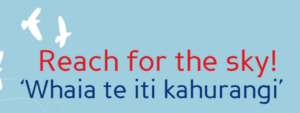The se ries on Aotearoa New Zealand continues here with a third article on Hobsonville Point Secondary School.
ries on Aotearoa New Zealand continues here with a third article on Hobsonville Point Secondary School.
“If you don’t find what knowledge or skills are missing and fix it, the kids aren’t going to want to go to class,” emphasized Maurie Abraham, principal of Hobsonville Point Secondary School (HPSS). Understanding where students are in their learning is important in making sure that teachers are differentiating learning effectively. HPSS starts by being in contact with sending primary schools to support students in the transition to secondary school. Within the first week, students take the Progressive Achievement Test (PAT) that can be set at different curricular levels in the first week of school.
Although it is expected that students will be at Level 4 when they enter in Year 9, they set a range of Level 2-6, as students enter with a wide range of skills. This provides a big picture of where their students are so they can then monitor growth according to stanines. Any students below stanine 4, usually about 10-15% of the incoming class, is considered a priority learner with even more frequent attention to progress, what is working, and what isn’t.
The diagnostics are also used by teachers to identify gaps and where students are struggling. Symtext (symbols and text) courses are designed to help students build their skills in numeracy and literacy. The coursework is linked to their other courses so they are able to repair gaps and strengthen fluency. Timetables (schedules) are set for students so that specialists in literacy and numeracy, often trained as primary teachers, can work more closely with them. Students at curricular level 2 are supported with teacher aides in the classroom. Using PAT again, assessments are done mid-year and end-of-year to monitor growth.
How do students and teachers know they are making progress? Abraham noted, “Grades aren’t always helpful in motivating students. If you give students grades, they don’t look at anything else. We need to give feedback in ways that keep them focused on learning. We want them to reach for the sky!” Currently in the SPIN modules, students receive scores based on the curriculum level they are performing at for each learning objective: developing (below level 4), proficient (levels 5 and 6) and adaptive (7 and above). Students are invited to self-assess using the rubric. Teachers can use this information to help make learning expectations explicit about what it means to be proficient. The teacher then determines the final score (or grade) and enters it into a student management system, KAMAR, that can be used to monitor growth longitudinally.
The next article is on professional learning.















